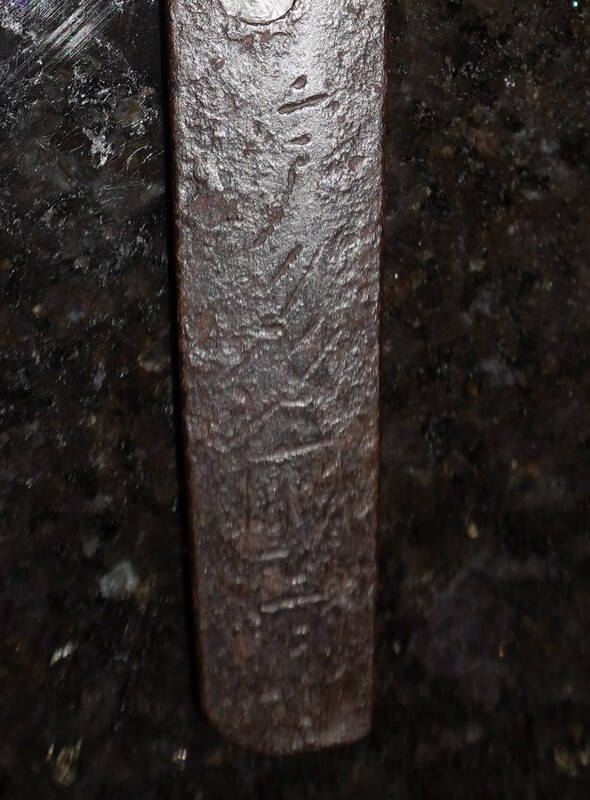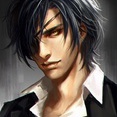Leaderboard
Popular Content
Showing content with the highest reputation on 06/02/2024 in all areas
-
Yeah, when I got to work and tried to load the forum, I saw it was down. Sent a message to support, and almost immediately they rebooted the server and it came back. Unfortunately I don't know how long it was down for, as I was asleep. But all good now. We are over 99% uptime, so I guess we aren't doing to badly. Sorry for the inconvenience all.5 points
-
笹葉 抱茗荷透 – Open work of bamboo leaves and daki myoga FYI: 【つば屋】 武州伊藤派・笹葉/抱き茗荷透かし鐔・透鐔 検索:(赤坂/尾張/長州)の落札情報詳細 - ヤフオク落札価格検索 オークフリー (aucfree.com)4 points
-
Link removed. Let's not post links to non Nihonto mass produced Chinese sword stores? We don't want you confused for one of those spam registrations that only posts links to catch web spiders and crawlers and increase a website's rankings, right? Some of those sites go to extraordinary lengths to seed links into forums.4 points
-
I use these plastic stands I get inexpensively from a site called ‘WISH’. Items are direct from China in most cases. They come in different sizes, but I find the 5cm tall ones work best for almost all tsuba. No problem with scratching on iron tsuba, but if there is a concern I suppose the edges could be sanded down a bit or a small piece of cloth/silk could be used to cushion tsuba. They only cost about 50 cents a piece depending on quantity purchased. Other nice features are: they are stackable (don’t take up much room), because they are clear they don’t take away from or block viewing the tsuba, and if they get broken or lost it’s not a huge financial loss.3 points
-
3 points
-
All right folks, first of all I want to assure that no intended disrespect to NBTHK shinsa activity from me. Simply I feel sometime confortable in expressing a different opinion. Here below another tsuba attributed to Heianjō-zōgan, showing a quite typical decoration with ranma-sukashi usually associated with Yoshirō-zōgan tsuba. I fully agree with Luca when he says that the tsuba we are dealing about is a "manual piece". Indeed here below the tsuba submitted by Justin paired with a very close example described as Yoshirō, taken from "Tanoshi Shinchū Zōgan Tsuba: 100 Tsuba" by Ōtani Sadao.3 points
-
3 points
-
TANTO which are made out of a SHINOGI-ZUKURI blade are not necessarily low quality, but there will be a good reason why a longer blade was shortened. In many cases, a fatal flaw provoked the loss of a good part of the blade, so these blades are probably of lesser quality. The other thing is that a TANTO is mainly a stabbing weapon while WAKIZASHI or KATANA are designed for slashing blows. These need more mass in the blade which is provided by the SHINOGI-ZUKURI design.2 points
-
Could be in the production process (clay/tempering). Significance is that it has no use as a tool or weapon, it has lost its purpose (dead).2 points
-
There are some metallurgical experts on here who can explain the different types and colours of rust…..from nearly white to orange to black, powder rust, spider rust etc. These look like small areas that have been previously cleaned off before they got too deep. Have a search on here re looking after a blade…..tons of advice. Most important is to keep it very thinly coated in a suitable oil and store in as dry an environment as you can.2 points
-
土州住吉岡利政, with an old Kanji character 邱 丘 (?)for Oka (hill). "Do-shu ju Yoshioka Toshimasa", a listed smith. (Yoshioka Toshimasa, living in the old Han region of Tosa) The cutout for the pan looks too small to have been originally for a matchlock, so rather than a conversion, this may be a later-generation original percussion gun from the late Bakumatsu.2 points
-
It’s rust. Only you can decide whether to return it or not. Depends on many things…..how much you paid, what the other flaws are etc.2 points
-
Nice. Liking the ginkgo leaf. Typical Tosa gun from the southwest of Shikoku. The smith name is barely legible at that angle. Will check against lists when I get home.2 points
-
2 points
-
2 points
-
These are not too common! Interesting. Somewhere I have a very old pair of iron 蝉 (semi) cicada menuki, with remains of zogan, but the features are largely rusted away. Will add them here if I can remember.2 points
-
In honor of the upcoming cicada invasion (labeled “cicadageddon” because both the 17 and 13 year broods are hatching at same time) in the Midwest, the fact that I am a certified arborist, and also the City Forester for a municipality in the Chicagoland area, I purchased the attached tsuba at the recent Chicago Sword Show and menuki off EBay. Collections are created for all different reasons…1 point
-
Type (Tachi, Katana, Wakizashi, Tanto, Naginata, Other) : Katana Ubu, Suriage or O-Suriage : O-Suriage (I think) Mei : (Mumei, Signature) : Mumei Papered or not and by whom? : NBTHK Hozon Paper Era/Age : Nanbokucho to early muromachi Jidai Shirasaya, Koshirae or Bare Blade? : Shirasaya Nagasa/Blade Length : 64,5CM Sori : Uncertain see pictures Hamon Type : Jihada : Other Hataraki Visible : Flaws : Some markings on the hamon and some scratches, see images for foraging imperfections Sword Location : The Netherlands Will ship to : Everywhere Payment Methods Accepted : Bank Transfer is preferred Price and Currency : SOLD Other Info and Full Description : This Chiyozuru Katana was acquired by me in the Netherlands as a bare blade, with no mounting. I was able to mount it in a shirasaya. It has a Habaki as well. The blade has a beautiful Jigane and dates to the early Muromachi period. There are a few foraging imperfections on the blade, I have done my best to highlight these imperfections in the images. The blade is made in the Yamashiro tradition by the Chiyozuru school. Beautiful sori and hamon activity aswell.1 point
-
Hello, I am new to this forum but I've been looking thru threads before. I acquired a tanegashima a while back from Japan and unfortunately need to sell it due to certain financial issues. I would like to get some help with the info on it as I was told it's a matchlock converted to percussion gun. Also would need some help with the translation on the signature on the barrel. I recognize some Kanji, possibly Toshi not sure on the rest. Let me know if I need to post under the translation help forum. Thank you for any help I receive on the info. Please, see pictures.1 point
-
Hi everyone, I have been getting quite a few messages on instagram about the Tsuba stands I created and use. I have started to offer out the .stl file for people to make their own, and I thought it may be a good idea to share here too. They are a simple 3d printed design and can be printed very quickly, depending on the quality settings. The pictures show examples of the lowest quality setting (some minor disruptions on top of the base). If you have a 3d printer, or access to one, it is a good option for a stand that is very consistent when displayed on a shelf. https://www.dropbox....rmmh4nrt4lpz70k&dl=01 point
-
Interesting older discussion. Why, exactly, is it that shinogi-zukuri tanto with yokote are always such low quality? I understand that the form is unattractive. And I’ve seen so many that are more ‘touristy’ than anything. But does it not stand to reason that high quality blades could be suriage to such a short length, that they’d still have some level of quality and interest? When a really nice shinogi-zukuri blade had to be shortened to such an extent. Was the sword simply scrapped rather than changed so drastically? All the best, Cheers, -Sam1 point
-
Im not really concerned about resale value with this project. A beautiful Koshirae is something I really enjoy looking at. Id probably be able to find an antique Koshirae at some point with enough time and searching, but If im going to admire a Koshirae on display in my home I don't want it to be for a sword I don't have. To me it just feels too incomplete.1 point
-
Is the hamon running out of the blade? I would go for a papered blade, these type of blades is for experts to know if to buy or not.1 point
-
Victor, the value is difficult to say from photos. The description is a bit strange as they obviouslöy have a little problem with translating. Also, they can't write SHIRASAYA correctly. The given weight for the blade seems wrong to me; a KATANA usually has 700 g or more, and this one is even quite solid with MOTOHABA 32 mm and 7,5 mm MOTOKASANE. That said, the blade may be o.k. if you like the straight SUGATA, probably KANBUN period, and the HAMON. The market price is what buyers are willing to pay, and for an o.k. blade of the EDO era, the price seems to be on the cheaper side in case there were no hidden KIZU (flaws).1 point
-
I forgot to mention, but a part of the proceeds will be donated to NMB of course :). If any additional pictures are requested please let me know!1 point
-
Thanks, I'll keep this thread updated with communications from the dealer for anyone interested.1 point
-
You will likely be fine if your budget is excluding fittings. Best of luck with your project. Ed1 point
-
1 point
-
1 point
-
The Sword and Samé, page 125.... With Yari, Asayemon adjusts the handle. In the sand of the tameshiba a small place is depressed to keep a head steady, and a hinin stadies the head with a spade, Asayemon partly undresses, and tries the Yari on the temple, then reports later. Sometimes when a Yari i tried on a skull it does not come out when drawn back, especially with flat triangular blades, because the flat side has a shinogi, sharp on on side only, so that it does not thrust straight and it is caught by the bone. Regular spears of triangular section give good tests. If the blade is too thin it may bend, and if the nakago is too thin, it may bend also, so that one must take great care to have the blade, neck and Nakago well proportioned. (Kawabe Masahide)1 point
-
Woah woah woah, from the way you're saying it, it sounds like you are polishing yourself. No offense I just hope that's not the case, it couldn't just ruin the value of the blade it will. Togishi are highly respected and few in number for a reason. However on that collection, feel free to showcase it.1 point
-
1 point
-
This could save a couple thousand dollars or more depending upon the quality of the tosogu you choose.1 point
-
Like I said, depending on the style and the level of quality, your budget may be insufficient. I never said a koshirae could not be made for that if you want bare bones. But I do know that you can spend much, much more than that as well. Which is why I said depending on style and quality. Of course, I am referring to the entire finished koshirae, which includes fittings. A decent quality tsuba can cost 1-2K alone. But everyone has their own opinions on things.1 point
-
As always I'll take issue with most things said. Nihonto is not per se a European type of art where a realistic scene is being interpreted and accented via specific technique. Its closest relations are probably the calligraphy and stone collecting, closely followed by ceramics, two more steps aways - ink painting. At its best it excels in conveying a particular emotion through an abstract form. It can be calm, strong, flamboyant, restricted, open, fresh. As long as its not "mundane", the artistic purpose is achieved. The "quality" assessment emphasizes first details down to individual strikes, then school-specific elements, consistency and finally composition. Understanding calligraphy does help in understanding what is a good sword. Taking into account that 95% of nihonto is calligraphy done by practicioners who can't even draw the lines at will because the media itself is exceptionally difficult. You see couple of areas where they sort of did what the school requires them to, the rest is smudges or just empty space devoid of ambition.1 point
-
I may have a lead for you on this smith. He may have added his last name on this tang. Need info on Japanese’s type 98 officers sword tang markings Edit: It is Kataoka Kunihiro.片岡國廣. Besides the link above, there is another one below. Grandfathers Type 98 Tang Translation Case closed.1 point
-
Colin, I started what would have been a lengthy reply offering an opinion on what constitutes an art sword but realised I was repeating myself. In 2020 I wrote an article which was posted here and on the Token of GB website. As usual I couldn't find my way to the articles section here (my problem not the sites) so have listed a link to the version on the Token Society website. I am sorry if this appears idle and or self promotion but I think it explores the idea of a sword being art beyond those expressed here so far. why article.pdf (to-ken.uk) much of what I have said in this was quoted from far better scholars and more knowledgeable people than me. I don't believe those opinions were elitist or based on protecting investment (mine certainly aren't) but I hope the points offered make some sense.1 point
-
Wow, Okan, are those actual inserts holding the sides together, or are they painted on or inlay?1 point
-
For sale at reduced price! Signed: Kanehide Nakada Kanehide was a wartime smith who after the war produced mukansa level blades. This one is a nice 27” blade (8” nakago) full 35”. Tsuka is 11.25” and the fittings are bean motif. Tsuba has a farmer in rain motif and very nice. The hamon is kawazu choji and I tried to capture it in the pics (sorry for the quality.) In original polish, some scuffing as it may have been used on tatami. No chips, nicks, cracks or hagiri of any kind. Overall a nice blade and fittings. Asking $2000 plus shipping. Inquiries welcome.1 point
-
Brian Tschernega would top the list of artisans I would turn to first for such a project. Recommend holding off on purchasing fittings before consulting with whomever you choose to go with. Lots of luck. Regards Desire is the cause of suffering.1 point
-
My take will be unorthodox, per usual. It is a variation in hardening, but the causes are varied. For example, Nambokucho Aoe dan utsuri - the bright belt of nie utsuri is usually caused by a strong foldover of steel right in this area which isolates it from heat conduction either up or down and therefore causes high temporal temperature gradients and therefore - strong martensite formation. That's also quite a few circa 1360 Aoe have ware in the same area. There is utsuri which is formed by the core iron being placed very close to the blade's surface and this can produce the whole range of very distinctive utsuri patterns which are usually associated with a weaker jigane, irregular spot like appearance and dark color which is actually quite well observed with the light source from above, compared to most utsuri which require a sideplacement of light. Then there are blades where it is complicated since the core iron, the lamination and the hardening are all at play. As a result the same "midare utsuri" can actually refer to rather different things. Here is the same image as above with jifu utsuri (its kobizen/ko ichimonji Juyo Bunkazai) after a color correction for the lens I used, next is typical Nambokucho Aoe dan utsuri which is a bit simple but does illustrate nie formation well (and its really bright), then there is shirake utsuri. Utsuri is probably my favorite photography subject so I do have a lot of photographs. I feel like I did not see utsuri as well represented on as diverse set of blades even in Fujishiro's album, and few were able to raise to his level in photography.1 point
-
I use a similar design but handmade and from bamboo. A diameter of 50 to 70 mm will fit most TSUBA. You can influence the design by choosing the front side. I recommend a fine Japanese KATABA saw for the work. Cheap, and easy to make! Of course there is ZERO damage risk if you don't rub the stand with the TSUBA !1 point
-
They are disposable. Don't worry about it. Carve a new one from a bamboo chopstick. Can easily remove any bits stuck in there. If the one side of the hole is blocked by the ito...just gently move it aside a bit with a blunt tool. It's not difficult. Then push the new one in...check which side is the larger end. Don't sweat the small stuff. Often they are almost in pieces when re-used many times.1 point
-
Someone was nice enough to do this last year in San Francisco at the show/shinsa there. One persons generosity helped me to get two blades papered, when I was unable to attend. I figure this is the least I can do to "pay it forward" and help others. Dan1 point
-
1 point
-
I’ve also read that the average sword from older time periods tend to be of higher quality due to them being well taken care of and surviving to this day. Whereas the actual average sword from that same time period have been lost. The newer swords have not been through as much and thus have more lower quality works surviving.1 point
-
When I get time throughout the day I will work on translations of the results. I can pretty much guarantee that the translation will contain mistakes, so please be forgiving, but this will help in reviewing this year's results. Koto Katana Mumei: Awataguchi Kunitoshi Nagasa: 67.0cm Sori: 1.4cm Katana Shumei: Sahei (no) jo Kuniyoshi (Awataguchi) Nagasa: 74.7cm Sori: 1.2cm Katana Mumei: Awataguchi Nagasa: 70.0cm Sori: 1.4cm Katana Mumei: Awataguchi Nagasa: 63.8cm Sori: 2.2cm Katana Mumei: den Awataguchi Nagasa: 68.7cm Sori: 2.0cm Tachi Mumei: Ayanokoji Nagasa:76.9cm Sori: 2.0cm Katana Mumei: den Niji Kunitoshi Nagasa: 68.9cm Sori: 2.0cm Tanto Mei: Rai Kunitoshi Nagasa:24.7cm Sori: uchizori Katana Kinzoganmei: Rai Kunimitsu - Kōson (Kao) Nagasa: 75.3cm Sori: 1.8cm Katana Mumei: Rai Kunimitsu Nagasa: 74.8cm Sori: 1.6cm Katana Mumei: Rai Kunimitsu Nagasa: 70.6cm Sori: 1.2cm Katana Mumei: Rai Kunimitsu Nagasa: 70.4cm Sori: 2.3cm Katana Mumei: Rai Kunimitsu Nagasa: 70.0cm Sori: 1.6cm Katana Mumei: Rai Kunimitsu Nagasa: 66.3cm Sori: 1.5cm Katana Mumei: den Rai Kunimitsu Nagasa: 72.0cm Sori: 1.6cm Tanto Mei: Rai Kunimitsu Nagasa: 27.3cm Sori: Minimal/None Katana Mumei: Nakajima Rai Nagasa: 74.4cm Sori: 1.6cm Katana Mumei: Nakajima Rai Nagasa: 61.9cm Sori: 1.2cm Wakizashi Mei: Rai Kunizane Nagasa: 39.2cm Sori: 0.8cm Katana Mumei: Rai Kuniyasu Nagasa: 69.0cm Sori: 1.6cm Wakizashi Mei: Hasebe Kunishige Nagasa: 54.6cm Sori: 1.3cm Wakizashi Mei: Hasebe Kunishige Nagasa: 38.2cm Sori: 0.6cm Wakizashi Mumei: Nobukuni (shodai) Nagasa: 38.0cm Sori: 1.0cm Tachi Mei: Yoshimitsu (den Senjuin) Nagasa: 80.4cm Sori: 3.2cm Katana Mumei: Senjuin Nagasa: 73.2cm Sori: 2.6cm Katana Mumei: Senjuin Nagasa: 67.5cm Sori: 1.0cm Katana Mumei: Ryumon Nagasa: 69.4cm Sori: 1.6cm Tanto Mumei: Taima Nagasa: 29.3cm Sori: uchizori Katana Mumei: den Tegai Kanenaga Nagasa: 73.1cm Sori: 2.2cm Katana Mumei: den Tegai Kanenaga Nagasa: 68.7cm Sori: 1.7cm Tanto Mei: Yamato Shikkake ju Norinaga kore o tsukuru - Ryakuō san __ roku gatsu hi - roku ju kyu Nagasa: 21.8cm Sori: uchizori Katana Mumei: Shikkake Nagasa: 70.2cm Sori: 2.4cm Katana Mumei: Den shikkake Nagasa: 69.5cm Sori: 1.4cm Tanto: Mei: Shintogo Kunimitsu Nagasa: 19.0cm Sori: uchizori Tanto Shumei: Masamune (meibutsu Ashiya Masamune) Kōjō (Kao) (attached origami) (gold lacquer Aoi-mon aikuchi tanto koshirae) Nagasa: 27.4cm Sori: uchizori Wakizashi Mei: Sagami junin Hiromitsu - Enbun san nen san gatsu hi Nagasa: 33.7cm Sori: 0.3cm Wakizashi Mei: Soshu ju Akihiro - Ōan 2 Nagasa: 31.8cm Sori: 0.6cm Wakizashi Mei: Soshu ju Akihiro Nagasa: 36.8cm Sori: 0.6cm Katana Mumei: Takagi Sadamune Nagasa: 68.8cm Sori: 1.7cm Katana Mumei: Shizu Nagasa: 71.0cm Sori: 1.2cm Katana Mumei: Shizu Nagasa: 69.1cm Sori: 1.8cm Katana Mumei: den Shizu Nagasa 70.0cm Sori: 1.6cm Naginatanaoshi katana Mumei: Kinju Nagasa: 67.9cm Sori: 2.6cm Tachi Mei: Hoju (Eitoku jidai) Nagasa: 68.4cm Sori: 2.1cm Tachi Mei: Kashu Fujiwara Yukimitsu – Bunmei ju shichi nen ni gatsu tsuitachi Nagasa: 71.85cm Sori: 2.6cm Katana Kinzoganmei: Saeki Norishige – Kōson (Kao) Nagasa: 68.8cm Sori: 1.4cm Katana Mumei: Norishige Nagasa: 69.2cm Sori: 1.0cm Katana Mumei: den Norishige Nagasa: 70.3cm Sori: 1.5cm Katana Mumei: Ko-Bizen Kageyasu Nagasa: 70.2cm Sori: 1.3cm Tachi Mei: Kunitsuna (Ko-Bizen) Nagasa: 71.2cm Sori: 1.8cm Tachi Mei: Sukehide (Fukuoka Ichimonji) Nagasa: 70.7cm Sori: 1.3cm Tachi Mei: Yorizane (Fukuoka Ichimonji) Nagasa: 71.2cm Sori: 2.6cm Naginatanaoshi wakizashi Mumei: Fukuoka Ichimonji Nagasa: 54.6cm Sori: 0.8cm Tachi Mei: Ichi (Yoshioka) Nagasa: 79.8cm Sori: 3.0cm Katana Mumei: Katayama Ichimonji Nagasa: 71.4cm Sori: 2.2cm Naginatanaoshi katana Mumei: Katayama Ichimonji Nagasa: 67.0cm Sori: 1.4cm Katana Mumei: den Iwato Ichimonji Nagasa: 70.7cm Sori: 1.2cm Tachi Mei: Sanemori tsukuru (Hatakeda) Nagasa: 77.0cm Sori: 1.8cm Katana Kinzoganmei Hatakeda Sanemori – Kōson (Kao) Nagasa: 71.2cm Sori: 2.0cm Katana Mumei: den Unju Nagasa: 71.8cm Sori: 2.2cm Katana Mumei: Kanemitsu Nagasa: 71.6cm Sori: 1.0cm Katana Mumei: Kanemitsu Nagasa: 66.0cm Sori: 1.8cm Katana Mumei: Tomomitsu Nagasa: 69.0cm Sori: 1.4cm Tachi Mei: Bishu Osafune Masamitsu – Oei roku nen ni gatsu hi Nagasa: 66.0cm Sori: 3.2cm Katana Mumei: Chogi Nagasa: 73.8cm Sori: 1.0cm Katana Mumei: den Chogi Nagasa: 68.9cm Sori: 1.6cm Katana Mumei: den Morikage Nagasa: 71.25cm Sori: 2.0cm Katana Mumei: Yoshikage Nagasa: 73.9cm Sori: 2.2cm Katana Mumei: Yoshikage En__ roku nen - Kinzoganmei Futatsu do Kiriotoshi Yamano Kanjuro Hisahide (kao) March 27th Nagasa: 70.7cm Sori: 1.6cm Katana Mumei: Ômiya Nagasa: 69.4cm Sori: 1.8cm Wakizashi Mei: Bi(shu) Osafune Morimitsu – Oei ju kyu nen ni gatsu hi Nagasa: 31.8cm Sori: slight Wakizashi Mei: Yasumitsu Nagasa: 44.2cm Sori: 0.6cm Katana Mei: Bizen (no) kuni ju Osafune Gorōzaemon no Jō Kiyomitsu – Koji gannen ju ichi gatsu ni ju hachi ka - Tame [ni] Sugimoto Yuki kore [wo] saku Nagasa: 67.1cm Sori: 2.4cm Kodachi Mumei: Ko-Aoe Nagasa: 61.1cm Sori: 1.6cm Tachi Mei: Yukikuni (den Bitchu Seno’o) Nagasa: 65.2cm Sori: 2.0cm Tachi Mei: Nobutsugu saku - Aoe (jidai Kamakura) Nagasa: 67.0cm Sori: 2.1cm Katana Mumei: Aoe Nagasa: 71.1cm Sori: 2.0cm Katana Mumei: Mihara Masaie Nagasa: 70.6cm Sori: 2.0cm Katana Mumei: Mihara Masaie Nagasa: 69.4cm Sori: 1.3cm Katana Mumei: Hokke (jidai Nanbokucho) Nagasa: 70.1cm Sori: 1.0cm Wakizashi Mumei: Sairen Nagasa: 59.5cm Sori: 1.4cm Katana Mumei: den Samonji Nagasa: 72.7cm Sori: 1.4cm Katana Mumei: den Samonji - (Hon'ami Kōon origami) - (black lacquer uchigatana saya) Nagasa: 66.8cm Sori: 2.0cm Tanto Mei: Chikushu ju Kunihiro saku – Shohei ju ni nen ni gatsu kichi jitsu Nagasa: 26.9cm Sori: 0.1cm Tanto Mumei: Sa Kunihiro Nagasa: 25.0cm Sori: 0.2cm Katana Mumei: Sa Yoshisada Nagasa: 69.7cm Sori: 1.6cm Naginatanaoshi wakizashi Mumei: Sa Hiroyasu Nagasa: 58.6cm Sori: 1.2cm Tachi Mei: Yukihira saku Nagasa: 76.6cm Sori: 2.2cm Katana Mei: Taira Shizunori Nagasa: 81.6cm Sori: 2.6cm Tachi Mumei: Enju Kunimura Nagasa: 78.6cm Sori: 1.8cm Katana Mumei: Enju Kunimura Nagasa: 67.9cm Sori: 1.7cm Katana Kinzoganmei: Enju Kuniyoshi – Kōson (Kao) Nagasa: 74.5cm Sori: 2.4cm Katana Mumei: Enju Kunitoki Nagasa: 74.0cm Sori: 2.4cm Katana Mumei: Enju Kunitoki Nagasa: 76.2cm Sori: 1.3cm Katana Mumei: Enju Nagasa: 69.1cm Sori: 1.5cm Tanto Mei: Hishu (Kiku)chi ju Kunifusa – Oei go nen ju gatsu hi Nagasa: 26.0cm Sori: none Katana Mumei: Ko-Naminohira Nagasa: 71.3cm Sori: 2.6cm Shinto 98. Wakizashi Mei: Kunihiro Nagasa: 40.2cm Sori: 0.65cm 99. Katana Mei: Hankei Nagasa: 74.4cm Sori: 1.4cm 100. Katana Mei: Oite Doshu Sa Yukihide saku – Kaei roku nen aki Nagasa: 73.0cm Sori: 2.0cm 101. Katana Mei: Hizen (no) kuni ju Fujiwara Tadahiro (nidai) Nagasa: 76.4cm Sori: 1.6cm1 point
-
Well, den Hosho is not really sensible as Hosho is already a group attribution, Chris. So they could have said Hosho rather than Tegai Kanekiyo, if we are talking about that specific blade above. On Tegai Kanekiyo - well, there are more than 1 zaimei (shodai) blades. The problem is also then exacerbated by there being several generations, with shodai rare but then sandai having a few more blades which have a Juyo status. I would personally also trust more Tanobe sensei’s attribution (he studies swords for longer in his home office before he writes sayagaki than the Shinsa panel) and definitely Kunzan sensei’s attribution (his are very, very rare and treasured by connoisseurs). Going back to the original, broader topic: at the lower level they become indistinguishable and interchangeable. But agreeing with Chris in that attribution is the first attestation of quality, the higher end Yamato blades obviously get attributed to the overall better smiths, who have been studied empirically and whose [signed] work the Shinsa has records of and can compare to. Just flicking through some of the TokuJu records, there are a lot of Taema, a fair few Tegai Kanenaga, some Shikake Norinaga, a fair few Senjuin.1 point
-
based on swords I have actually seen in hand I would fully support the opinions on Taima, Tegai Kanenaga and Shikkake Norinaga. The Taima blades in particular were stunning and as Ray said previously if they are considered close to Yukimitsu then you know they have to be very good indeed. Within the past couple of weeks I had the chance to look again at a signed wakazashi by Kanenaga which is a very unusual thing and stunningly beautiful. I have also spent a lot of time studying a Norinaga Nnaginata naoshi which is out of this world (in my opinion). I have seen few Hosho works but those I have have always been of very high quality. While not as beautiful as Taima they are very good indeed. Something I don't think has been mentioned in detail is ko-Senjuin. Based on only one piece I saw more than 20 years ago I was smitten by the quality of what I saw. While different from the others it was equally beautiful and screamed quality. I think the disparity in opinions tends to relate to later wok of both Senjuin and more especially Tegai where the quality certainly seems to have slipped away as with so many other schools of the time.1 point
-
I do not know that Hosho should be considered to be on top. Taima is an alternate consideration when looking at a sword which may be Soshu Yukimitsu. I have seen swords move back and forth between Taima and Yukimitsu on their way up the chain to Juyo. Some of the best Yamato swords I have seen were Taima. At that same level of quality I feel would be Ryumon Nobuyoshi from the Senjuin school.1 point
This leaderboard is set to Johannesburg/GMT+02:00




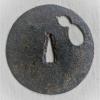
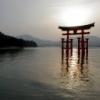



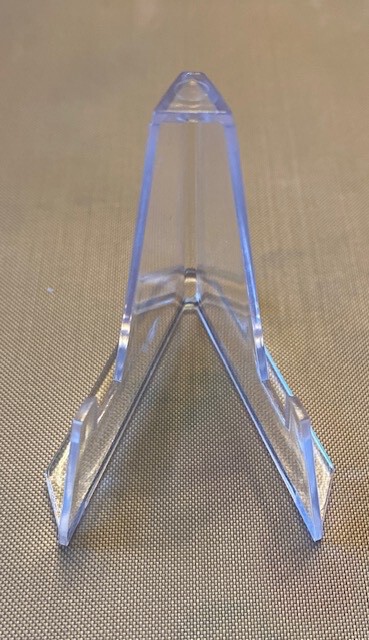



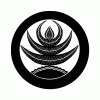
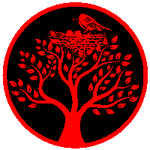

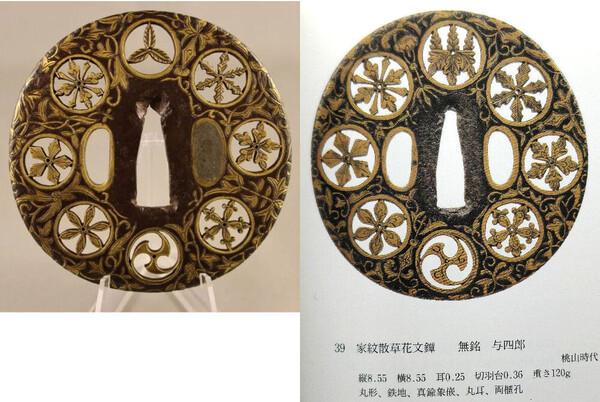









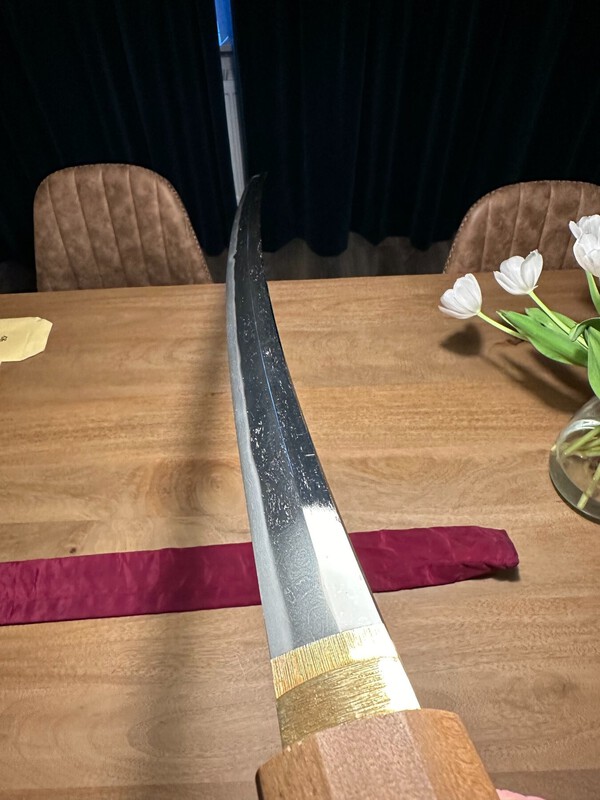

















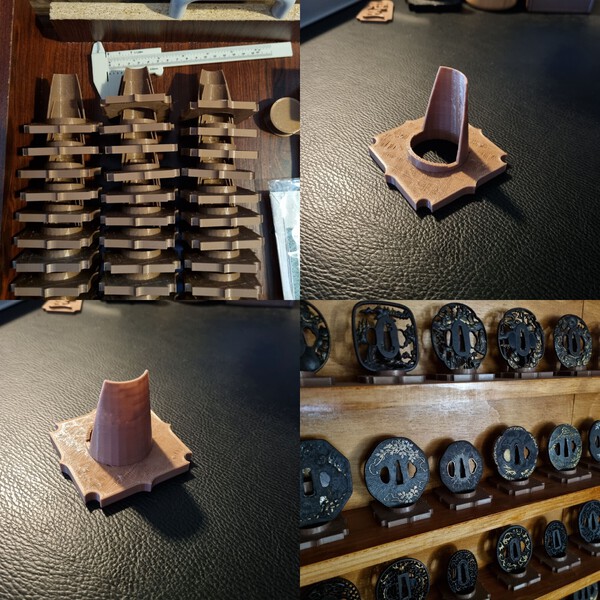










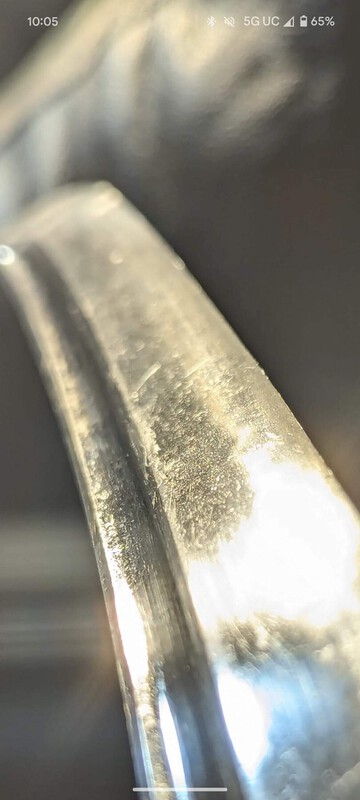


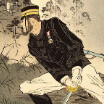
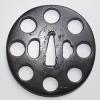





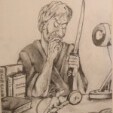


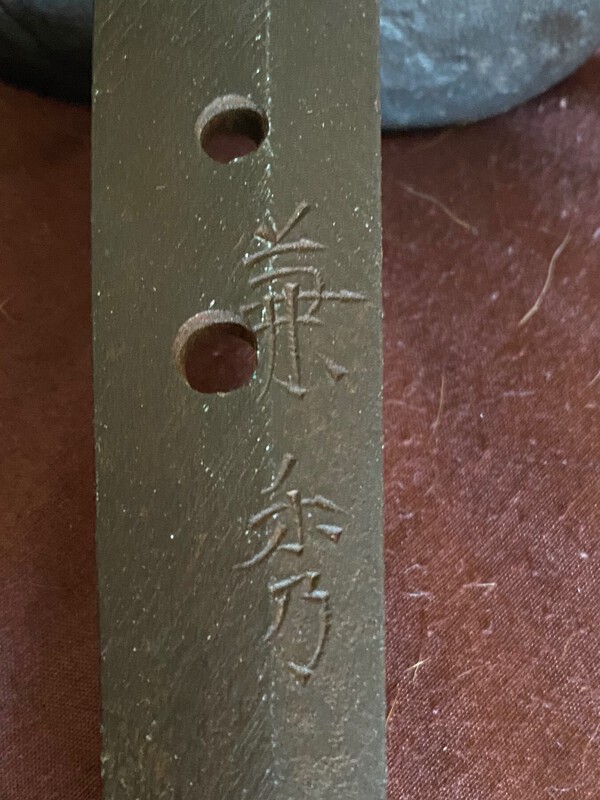


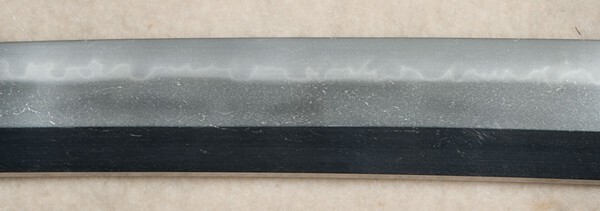



.thumb.jpg.bc10b59027a00aa142dce0349f3ba9e0.jpg)
